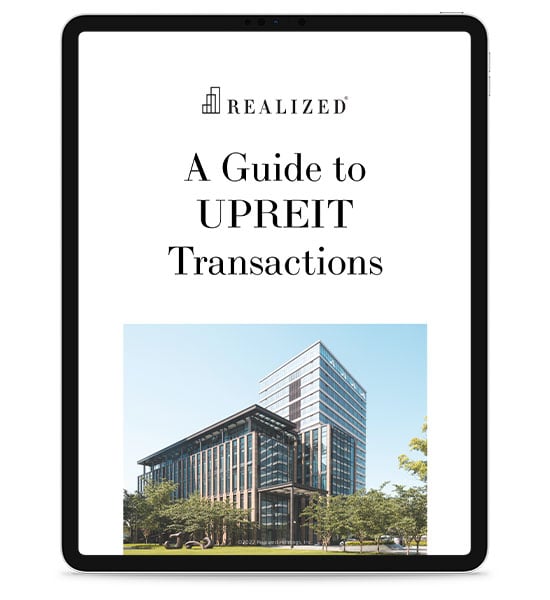
Real estate investors are always seeking strategies that can help optimize their gains, diversify their portfolios, and manage their tax liability. Two approaches that offer similar benefits have emerged in recent times: Delaware Statutory Trusts (DSTs) and umbrella partnership real estate investment trusts (UPREITs). These vehicles have very similar benefits and structures, making them ideal for investors who want a streamlined path from one property to another.
Below, Realized 1031 shares some strategic considerations when combining UPREIT and DST structures to help you understand how such an approach works before committing. Let’s take a closer look!
Recap of DST and UPREIT Structures
If you’re not already aware, DSTs are a type of investment vehicle that owns underlying income-generating properties. Investors enter by acquiring beneficial interests. Since DSTs qualify for 1031 exchanges under Revenue Ruling 2004-86, there’s also an added benefit of tax deferral for capital gains taxes. Only the sponsor has complete control over the management and operations of the underlying properties, making DSTs truly passive income sources. However, DSTs have a defined holding period and will have a liquidity event in five to seven years or more, depending on the agreement.
Similarly, UPREITs offer tax deferral benefits. Investors contribute their property to the UPREIT through a 721 exchange for operating partnership (OP) units. OP unit holders receive monthly dividends equivalent to the number of units they hold. The REIT, which has the controlling interest, is in charge of managing the underlying properties, turning UPREITs into passive income investments. Plus, UPREITs don’t have defined liquidity events, allowing investors to hold OP units indefinitely.
Why Combine DST and UPREIT Investments?
DSTs, given their holding periods, make them a popular stepping stone investment. In other words, they’re not as permanent as other types of long-term investments. Once the holding period is over, investors can either liquidate or continue in another exchange to maintain their tax-deferral benefits. If they choose to liquidate, then the act would trigger a taxable event and result in major financial liability.
Thankfully, you can reinvest your fractional interests into an UPREIT. Some DSTs offer UPREIT contributions as an exit strategy. In this case, the DST will contribute the underlying properties to the UPREIT after the holding period. Your beneficial interests are then converted into OP units.
Given how the IRS doesn’t recognize losses or gains during the contribution, your capital gains taxes remain deferred until a triggering event occurs. Thankfully, UPREITs don’t have set holding periods, and you can hold your OP units indefinitely. This makes UPREITs a more definite long-term solution.
Strategic Considerations To Keep in Mind
Before committing to a DST-UPREIT investment, you’ll want to understand all the implications that come with such a strategy.
- OP Conversion Is a Taxable Event: Converting your OP units for REIT shares for trading or selling is a taxable event. To avoid getting a huge tax hit, some investors convert a few units at a time.
- Market Risk: Both DST interests and OP units depend on market conditions for valuation. During volatile periods, OP units may have a lower value. As such, proper timing is still key to increasing the chances of higher profits when selling REIT shares.
- Sponsors Matter: Even if the underlying properties of the UPREIT promise high income, sponsors may have priorities that don’t align with your goals. As such, it’s important to choose UPREITs whose priorities align with your investment needs. For DSTs, make sure to choose a sponsor that actually offers UPREIT reinvestment as an exit strategy. Some may not offer this option at all, preferring to sell the properties outright.
- Estate Planning Timing: For older investors, holding OP units until death could eliminate deferred gains due to the step-up in basis rule. This benefit offers tax relief to your heirs.
Wrapping Up: DST and UPREIT Investing
Reinvesting DST fractional interests in UPREITs is a powerful strategy that helps you continue to enjoy tax-deferral benefits. Plus, this approach helps you maintain passive income and the professional management you enjoyed from the DST. Finally, UPREITs offer better liquidity than DSTs, given how easy it is to convert OP units to shares. Make sure that you’re aware of how the conversion could trigger tax liability. Evaluating sponsors thoroughly and planning for market volatility are also important to make the most of this strategy and protect your investment.
Sources:
https://www.taxnotes.com/research/federal/usc26/721
https://smartasset.com/investing/delaware-statutory-trusts-dsts



